Mesenchymal Stem Cell-derived Nanovesicles as a Credible Agent for Therapy of Pulmonary Hypertension
- PMID: 35507777
- PMCID: PMC12039797
- DOI: 10.1165/rcmb.2021-0415OC
Mesenchymal Stem Cell-derived Nanovesicles as a Credible Agent for Therapy of Pulmonary Hypertension
Abstract
Extracellular vesicles (EVs) derived from mesenchymal stem cells (MSCs) have been evaluated in many studies as promising therapeutic agents for pulmonary hypertension (PH). However, low yields and heterogeneity are major barriers in the translational utility of EVs for clinical studies. To address these limitations, we fabricated MSC-derived nanovesicles (MSC-NVs) by serial extrusion through filters, resulting in MSC-NVs with characteristics similar to conventional EVs but with much higher production yields. Herein, we examined the therapeutic efficacy of MSC-NVs in preclinical models of PH in vitro and in vivo. Intervention with MSC-NVs improved the core pathologies of monocrotaline-induced PH in rats. Intravenous administration of MSC-NVs resulted in significant uptake within hypertensive lungs, pulmonary artery lesions, and especially pulmonary artery smooth muscle cells (PASMCs). In vitro, MSC-NVs inhibited PDGF-induced proliferation, migration, and phenotype switching of PASMCs. miRNA-sequencing analysis of the genetic cargo of MSC-NVs revealed that miR-125b-5p and miR-100-5p are highly abundant, suggesting that they might account for the therapeutic effects of MSC-NVs in PH. Depletion of miR-125b-5p and miR-100-5p in MSCs almost completely abolished the beneficial effects of MSC-NVs in protecting PASMCs from PDGF-stimulated changes in vitro and also diminished the protective effects of MSC-NVs in monocrotaline-induced PH in vivo. These data highlight the efficacy and advantages of MSC-NVs over MSC-EVs as a promising therapeutic strategy against PH.
Keywords: mesenchymal stem cells; miRNAs; nanovesicles; pulmonary artery smooth muscle cells; pulmonary hypertension.
Figures
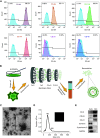
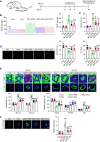
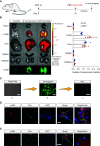
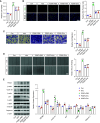
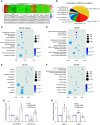

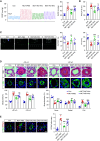
Comment in
-
Stem Cell-derived Nanovesicles for the Treatment of Pulmonary Hypertension: Are We There Yet?Am J Respir Cell Mol Biol. 2022 Jul;67(1):3-5. doi: 10.1165/rcmb.2022-0078ED. Am J Respir Cell Mol Biol. 2022. PMID: 35522729 Free PMC article. No abstract available.
Similar articles
-
Let-7a-transfected mesenchymal stem cells ameliorate monocrotaline-induced pulmonary hypertension by suppressing pulmonary artery smooth muscle cell growth through STAT3-BMPR2 signaling.Stem Cell Res Ther. 2017 Feb 10;8(1):34. doi: 10.1186/s13287-017-0480-y. Stem Cell Res Ther. 2017. PMID: 28187784 Free PMC article.
-
Exosomes induce and reverse monocrotaline-induced pulmonary hypertension in mice.Cardiovasc Res. 2016 Jun 1;110(3):319-30. doi: 10.1093/cvr/cvw054. Epub 2016 Mar 14. Cardiovasc Res. 2016. PMID: 26980205 Free PMC article.
-
CAR (CARSKNKDC) Peptide Modified ReNcell-Derived Extracellular Vesicles as a Novel Therapeutic Agent for Targeted Pulmonary Hypertension Therapy.Hypertension. 2020 Oct;76(4):1147-1160. doi: 10.1161/HYPERTENSIONAHA.120.15554. Epub 2020 Aug 24. Hypertension. 2020. PMID: 32829668
-
Therapeutic potential of mesenchymal stem cell-derived extracellular vesicles: A focus on inflammatory bowel disease.Clin Transl Med. 2024 Nov;14(11):e70075. doi: 10.1002/ctm2.70075. Clin Transl Med. 2024. PMID: 39488745 Free PMC article. Review.
-
Innovative preconditioning strategies for improving the therapeutic efficacy of extracellular vesicles derived from mesenchymal stem cells in gastrointestinal diseases.Inflammopharmacology. 2023 Dec;31(6):2973-2993. doi: 10.1007/s10787-023-01350-6. Epub 2023 Oct 24. Inflammopharmacology. 2023. PMID: 37874430 Free PMC article. Review.
Cited by
-
TNF-α-preconditioning enhances analgesic efficacy of mesenchymal stem cell-derived extracellular vesicle in neuropathic pain via miR-101b-3p targeting Nav1.6.Bioact Mater. 2025 Jul 26;53:522-539. doi: 10.1016/j.bioactmat.2025.07.029. eCollection 2025 Nov. Bioact Mater. 2025. PMID: 40755851 Free PMC article.
-
Scalable Generation of Nanovesicles from Human-Induced Pluripotent Stem Cells for Cardiac Repair.Int J Mol Sci. 2022 Nov 18;23(22):14334. doi: 10.3390/ijms232214334. Int J Mol Sci. 2022. PMID: 36430812 Free PMC article.
-
Advancements in engineered mesenchymal stem cell exosomes for chronic lung disease treatment.J Transl Med. 2023 Dec 9;21(1):895. doi: 10.1186/s12967-023-04729-9. J Transl Med. 2023. PMID: 38071321 Free PMC article. Review.
-
Stem cell therapy in pulmonary hypertension: current practice and future opportunities.Eur Respir Rev. 2023 Sep 27;32(169):230112. doi: 10.1183/16000617.0112-2023. Print 2023 Sep 30. Eur Respir Rev. 2023. PMID: 37758272 Free PMC article. Review.
-
Pulmonary Hypertension: Molecular Mechanisms and Clinical Studies.MedComm (2020). 2025 Mar 10;6(3):e70134. doi: 10.1002/mco2.70134. eCollection 2025 Mar. MedComm (2020). 2025. PMID: 40066229 Free PMC article. Review.
References
-
- Muhammad SA, Abbas AY, Saidu Y, Fakurazi S, Bilbis LS. Therapeutic efficacy of mesenchymal stromal cells and secretome in pulmonary arterial hypertension: a systematic review and meta-analysis. Biochimie . 2020;168:156–168. - PubMed
-
- Kanki-Horimoto S, Horimoto H, Mieno S, Kishida K, Watanabe F, Furuya E, et al. Implantation of mesenchymal stem cells overexpressing endothelial nitric oxide synthase improves right ventricular impairments caused by pulmonary hypertension. Circulation . 2006;114(1 Suppl):I181–I185. - PubMed
Publication types
MeSH terms
Substances
Grants and funding
LinkOut - more resources
Full Text Sources
Medical

